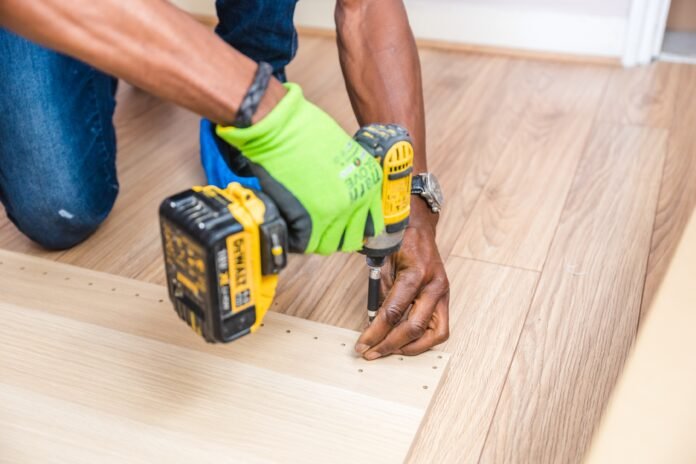Taking the step up from small-scale tinkering to full-scale renovations is an intimidating prospect for most of us, and if you’re feeling confident about your first foray into trickier projects, this could be your downfall.
Thankfully with a bit of forethought and planning, major home improvements can be made without compromising your DIY ethos, so let’s discuss a few impactful tips to point you in the right direction.
Start with a design to work towards
It might seem obvious, but plenty of people make the mistake of diving straight into a renovation project without plotting out what they want to achieve beforehand.
This isn’t just about setting a budget, although that’s part of it; you also need to think about what you want the finished product to look like, so you can base the rest of your preparations around this unified vision.
If you’re not the only member of the household, it’s wise to get input from anyone else who lives under the same roof as you. This will ensure that you’re all on the same page from the get-go, and avoid conflicts arising once work is already underway.
Try a building supply company to get what you need, e.g metal threaded rod
If you’re buying building materials from a consumer-facing supplier, chances are that you’ll be paying a premium and will also find it harder to place bulk orders for essential items.
Conversely, if you pick up metal threaded rod, or any other material for that matter, courtesy of a firm that deals directly with construction companies and contractors, you’ll overcome both of these issues in one fell swoop.
This is made even easier thanks to the option of ordering materials online and having them delivered directly to you, so if you don’t have the means to transport bulky loads home, it’s a convenient choice as well as a cost-effective one.
Get practice if possible
If you’re new to using a tool, working with a material, or completing a particular DIY job around the house, it’s better to assume that you’ll make mistakes during your first attempt.
For this reason, you should encompass your failures within a practice session that won’t leave a permanent blemish on your property.
This goes for all sorts of tasks, whether you’re applying the sealant to bathroom fittings, installing wall shelves, laying paving slabs, or anything else. YouTube tutorials will only get you so far, and nothing is better for learning than real experience.
Tackle trouble spots before you redecorate
There’s a correct order to every home improvement project, and if you uncover underlying issues which need to be addressed, then these should be prioritized.
There’s no point racing ahead and attempting to complete remodeling and redecoration work before you’ve got to grips with something like a leaky pipe, a masonry crack or a loose piece of timberwork. If you do, you might end up having to repeat this work all over if the imperfections are exacerbated and lead to damage being done.
Make safety a priority
Home improvements involve all sorts of dangerous equipment, and as well as following best practices for using tools, you must equip yourself with the right safety gear to avoid injury.
There’s no excuse for cutting corners, literally or metaphorically, so wearing eye protection, gloves and durable clothing is crucial to averting calamity.
Wrapping up
If you have any concerns, do consult a professional, even if you don’t end up outsourcing the remodeling work to them and choose to take the DIY approach, as this can save time and money.



















